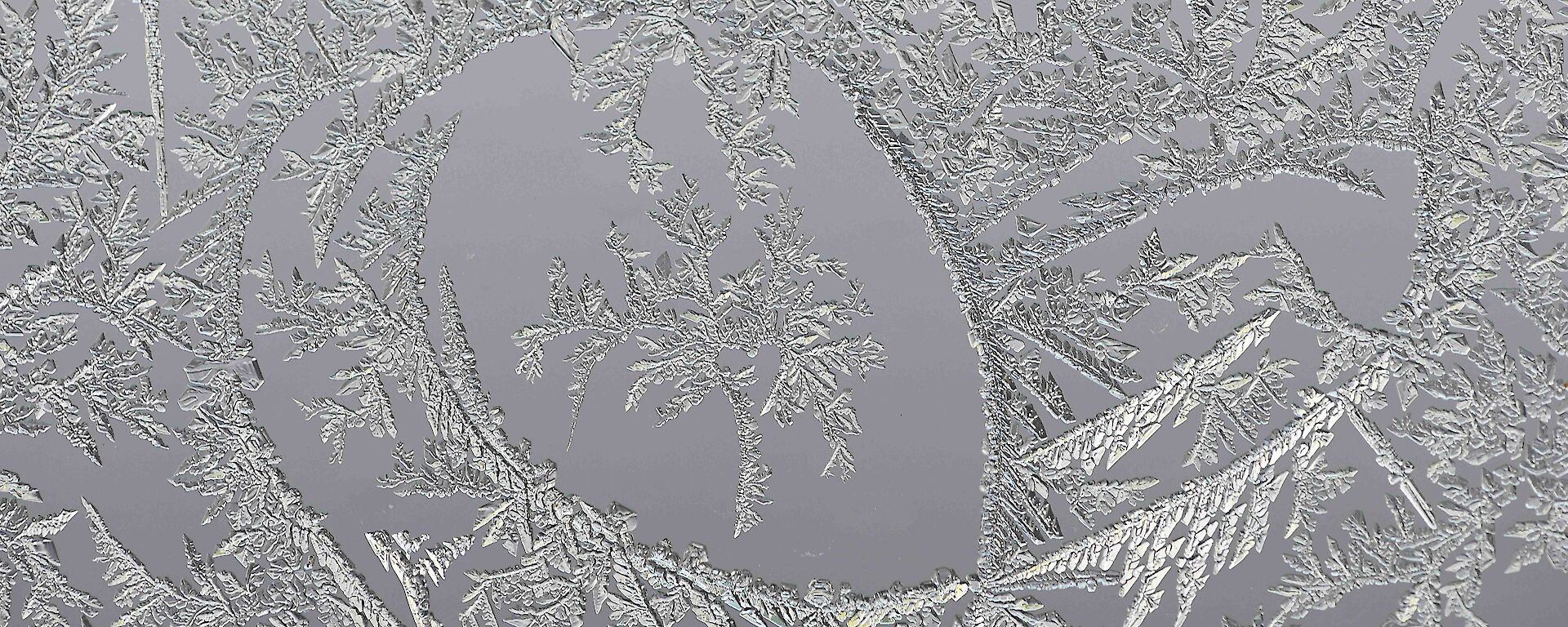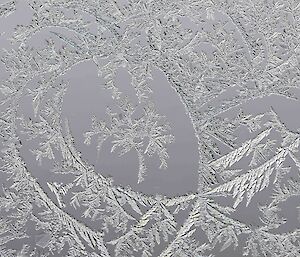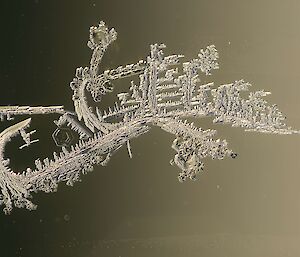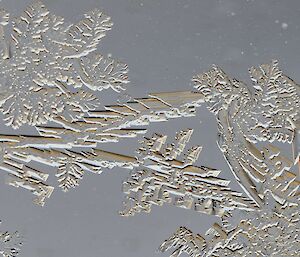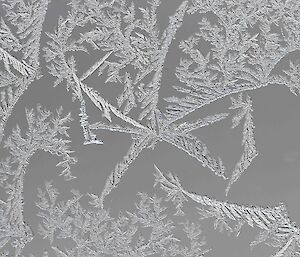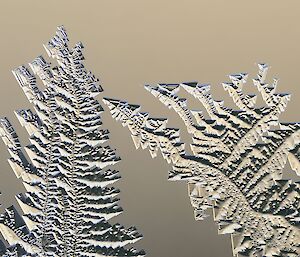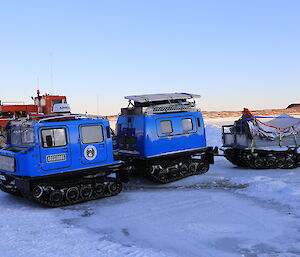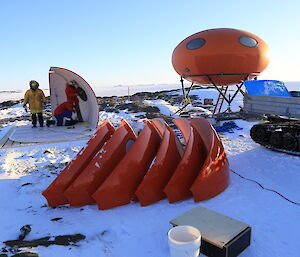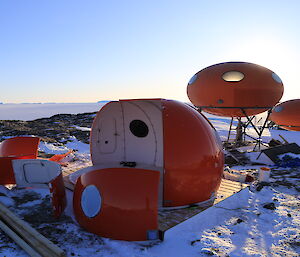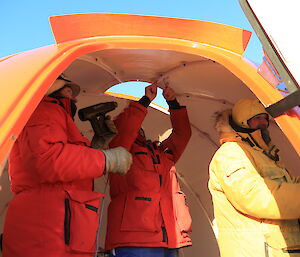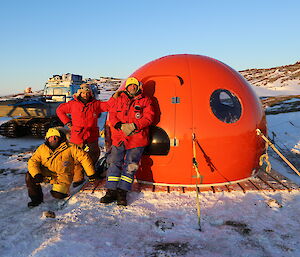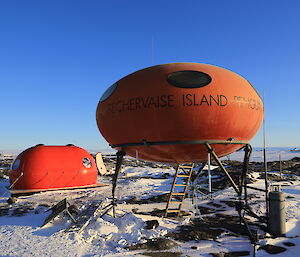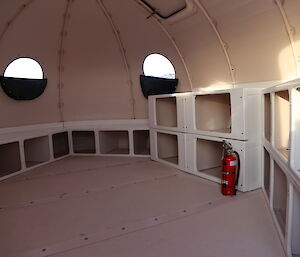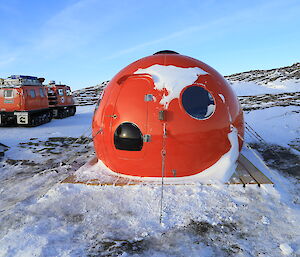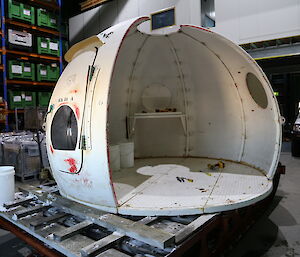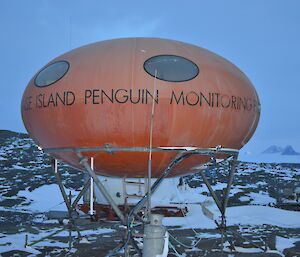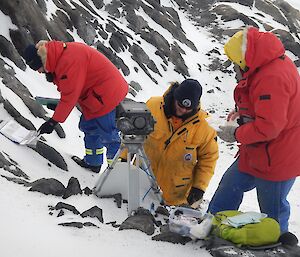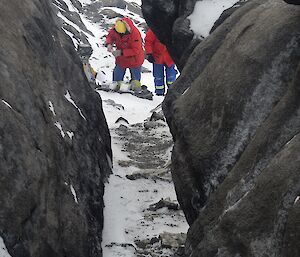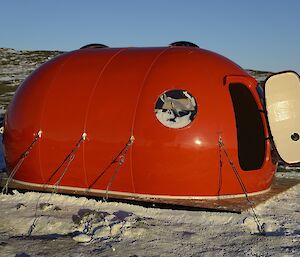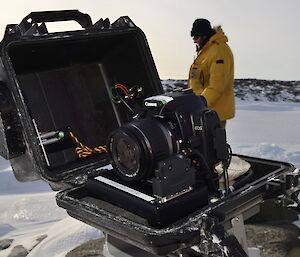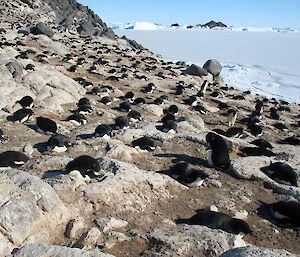My primary role at Mawson station is being one of the two wintering electricians. As part of the electrical team I maintain the electrical systems across the station as well as field huts off station, as a secondary role I run the post office and my other duties on station include slushie duties and whatever Saturday duty I am assigned to as this is on a rotating roster.
However, the main reason we are here is in support of science and scientific research and this varies from measuring radiation levels (ARPANSA — Australian Radiation Protection and Nuclear Safety Agency) to counting Adélie penguins.
Trevor, our communications technician, needed to show a couple of extra people how to service the penguin monitoring cameras and as the weather was perfect the other day a small group of us made our way off station and over to Béchervaise Island. This is one of the main Adélie penguin colonies that has two Googie huts for the biologists: one is a lab and the other is set up with a small kitchen and three beds. A new melon hut has recently been constructed which will be set up as more accommodation.
Béchervaise Island is also fitted with two cameras and a Tiris weighbridge. The island where the penguins build their nests resembles a miniature farm as there are small wire fences built in such a way as to force the penguins over the weighbridge and also in view of the two cameras. The cameras are programed in such a manner as to start photographing on 1 October and stop taking photos around late March. Built into the program which controls the camera are quite a lot of parameters that determine the frequency of the photos. Some of these include the length of daylight as in the middle of our summer we have 24 hours of daylight and battery voltage, so on average a photo is taken every 60 minutes however they can be as frequent as every 10 minutes.
Once the two cameras on Béchervaise Island had been cleaned, inspected and serviced our crew drove west along the coast to the Rookery Islands to camera number two. This camera monitors the Adélie penguins that breed and build their nests on this island where as camera number one monitors the cape petrel. The Rookery Islands are classified as an ASPA (Antarctic Special Protected Area) which have strict rules regarding entering the area.
With these four cameras serviced we made the slow trip back to station, with plans to service the remaining cameras in the future, enjoying some of the unbelievable scenery along the way.
It is a real pleasure to be involved in someone’s long term research even if it sounds unusual to be counting penguins. The information that has being collated over decades of collecting raw data forms the foundations for a vast range of further studies. I hope that we continue to fund and support this critical scientific research well into the future.
Robbie Baker

